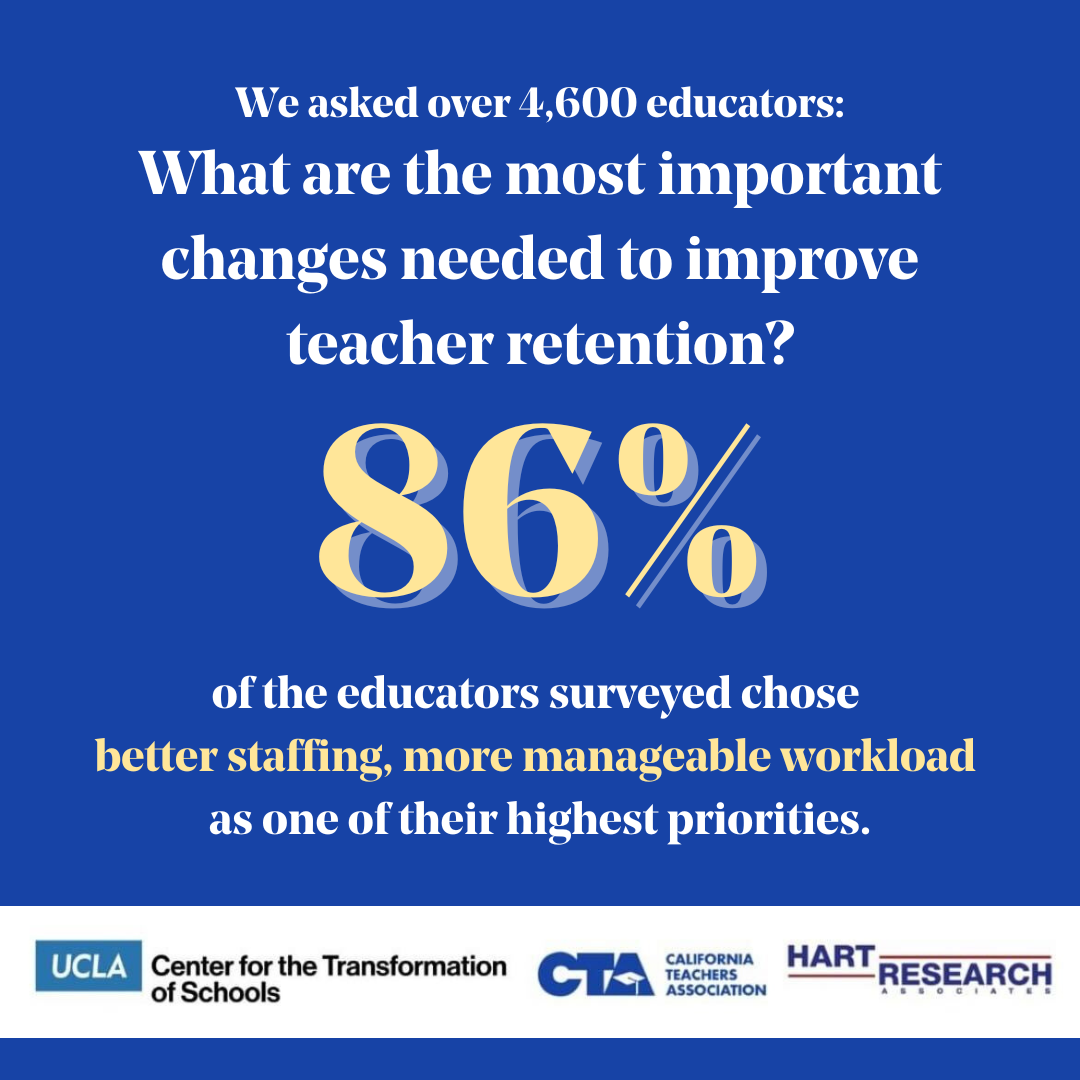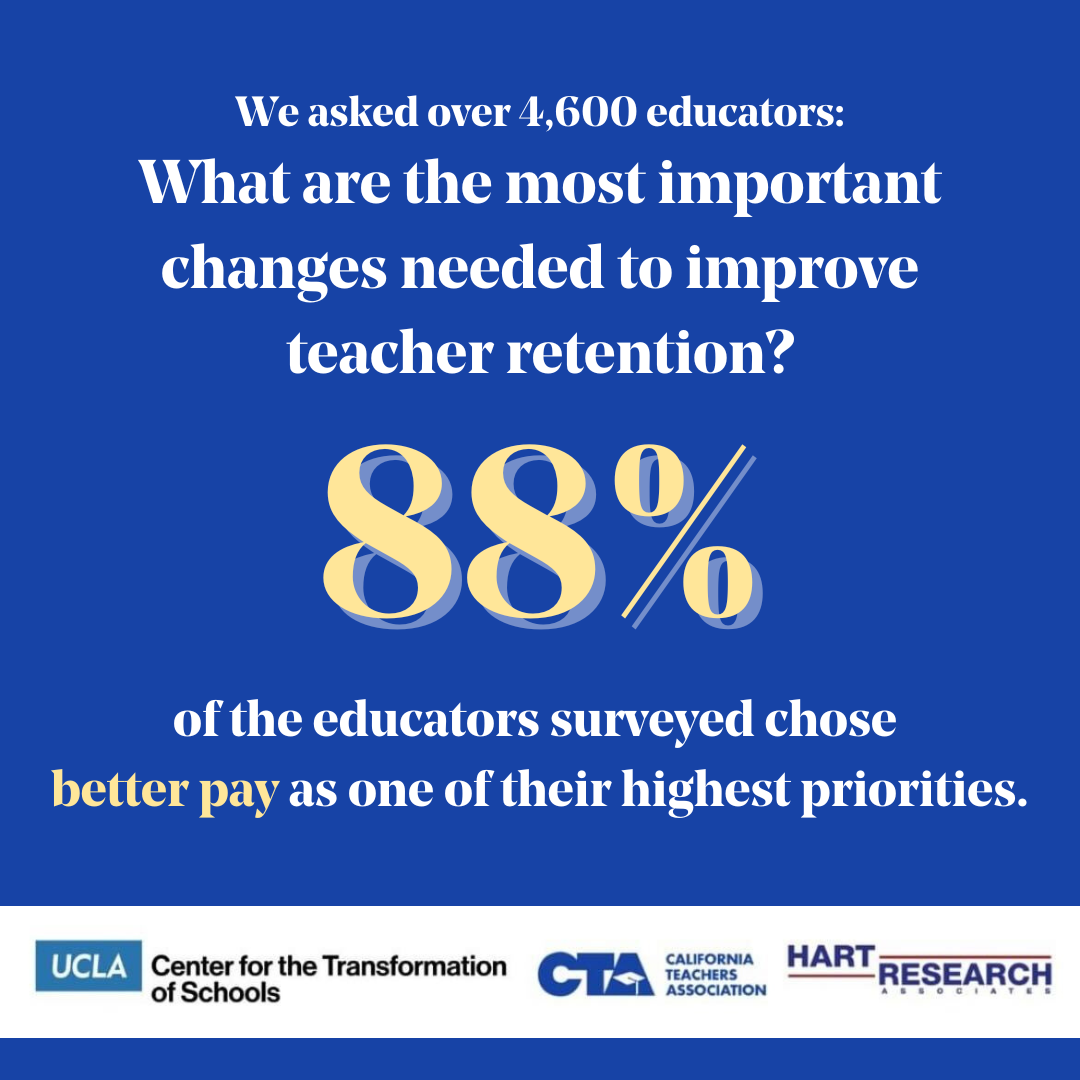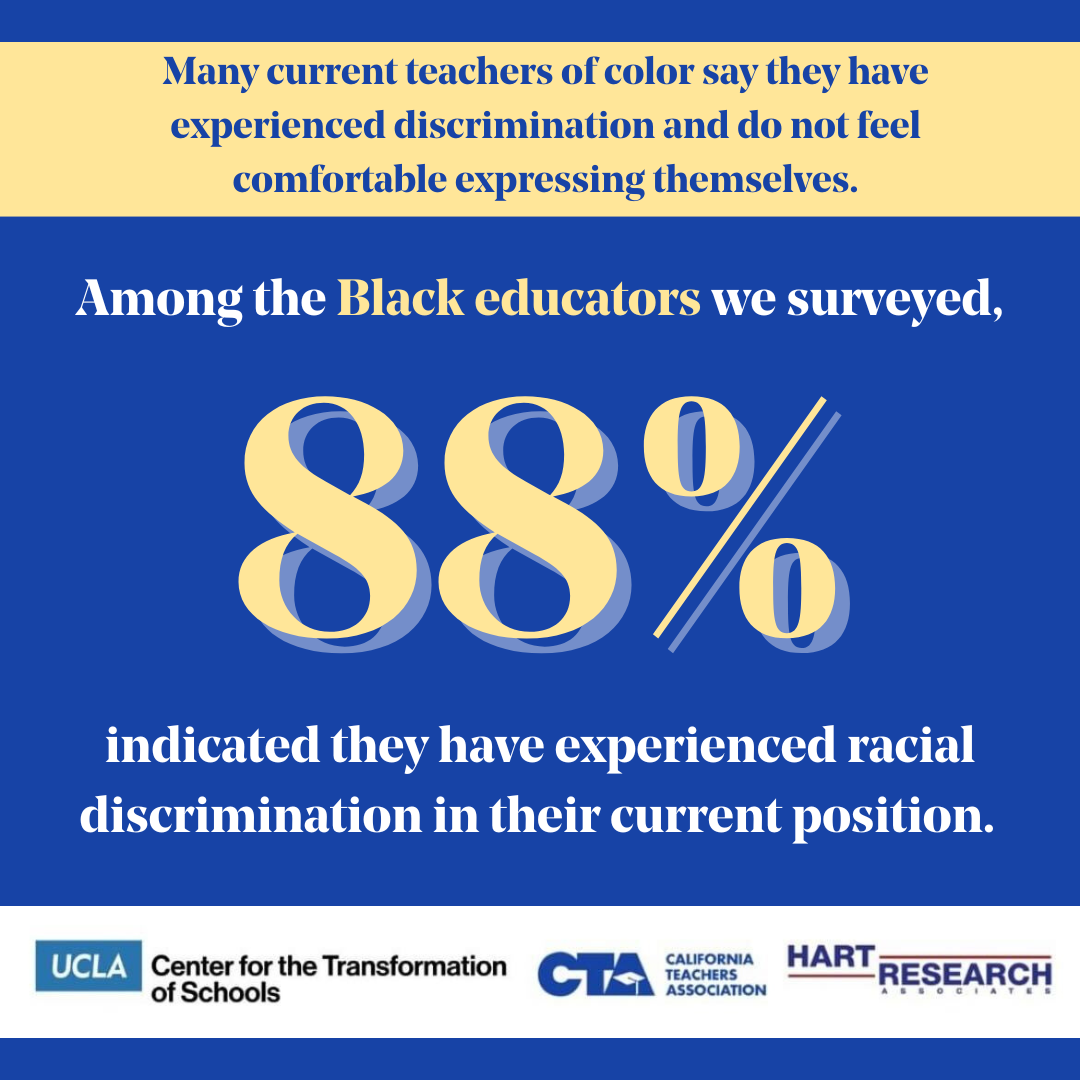
As the teacher shortage impacts schools throughout California and across the United States, the results of a new CTA/UCLA survey show that better pay and working conditions are key to preventing educators from leaving the profession.
To identify the driving factors contributing to California’s teacher shortages and to better understand the racialized experiences of educators of color, CTA partnered with UCLA’s Center for the Transformation of Schools and Hart Research Associates this summer to conduct a comprehensive statewide survey of 4,600 California teachers. “Voices from the Classroom: Teaching in the Golden State” includes a quantitative survey of current teachers as well as in-depth interviews with former and aspiring educators.

The survey found that four in 10 current teachers have explored leaving the classroom either to continue within education or to switch occupations entirely. One in five current teachers say they will likely leave the profession in the next three years – with educators aged 55 and older the most likely to leave along with more than a third of younger teachers.
“California ranks at the top of the list of teacher shortages nationwide. Some estimates have the teacher shortage this year at 50,000 educators,” CTA President E. Toby Boyd said during a press event today announcing the results. “This is a crisis, and we need to come together to address it at all levels of our system, from the Legislature to the classroom.”
The top reason current teachers say they are considering leaving: Burnout from stress, with political attacks on teachers the next highest factor. Educators said workload, low pay, student apathy and behavioral issues, and lack of district support contributed to their high stress levels. Most former teachers said there was no single reason they left the profession – it was a gradual compounding of all the issues.

“Given these findings, it’s critical for the state and all of us to explore and embrace the many solutions suggested in this research,” said CTA Secretary-Treasurer Leslie Littman. “If we want to attract and keep people in the teaching profession, we need to ensure they are appreciated and respected for the important work they do every day.”
Educators overwhelmingly pointed to better pay as the number one priority – the survey report suggests state and local officials should focus on the top four results to help attract and retain teachers. Former teachers underscored that compensation is too low for educators to afford the high cost of living in California, which many aspiring educators also noted as a concern as they consider a future in the profession.

While most educators agreed their primary motivations for entering teaching and staying in the profession are to help students and make a positive difference in our world, they most commonly and acutely reported feeling exhausted and stressed. Additionally, a majority of current educators expressed low levels of satisfaction with key aspects of their job.
When it comes to job satisfaction, a majority of teachers say they are satisfied with being accepted for who they are and working in a discrimination-free environment. But educators are highly dissatisfied with district leadership, their lack of input into decision-making, workload, class sizes and the support they receive to do their job.
The survey found that many current educators of color, especially teachers who are Black or Asian & Pacific Islander, have experienced discrimination on the job and do not feel comfortable expressing themselves at work. Four in 10 LGBTQ+ teachers also reported experiencing discrimination based on their sexual orientation.

Asian American Pacific Islander, American Indian/Alaska Native and Black teachers felt least comfortable in, supported by and connected to their schools.
“It’s significant and disheartening to find that teachers of color feel less comfortable being their authentic selves and uncomfortable expressing themselves, and that many report that they have experienced racial discrimination in their current position,” Boyd said.

Educators identified a variety of changes that could address burnout and improve teacher retention, including smaller class sizes, more support services for students, better staffing and a more manageable workload. But the top change, by far, is higher compensation.
“Teachers are not fairly compensated for the work, time, effort and emotional commitment they give to the job,” said Boyd. “The many hours teachers work outside the classroom are essentially unpaid. And many educators are forced to take on second jobs just to make ends meet.”
Aspiring educators also provided several insights on teacher preparation, noting that real-time teaching experiences are the best preparation for life as an educator. They reported that the heavy workload is a major stressor and the financial costs associated with teacher-preparation programs are a significant barrier. A significant number of aspiring educators suggested compensating student teachers to alleviate financial stress at an important time in the teacher-preparation process. This stress and other factors contributed to aspiring educators of color reporting that they had become less motivated to teach because of their preparation program at higher rates than their white counterparts.
“We have to embrace some bold ideas – like paying student teachers for the work they are doing in classrooms, just like we do for doctors, electricians and so many other professions,” Littman said.
Littman added that CTA will convene a workgroup to analyze the study results and recommend a plan of action. Areas the group will explore include paid student teaching or teacher apprenticeships, streamlining credentialing requirements and standardized tests, moving toward mentorships and support, and improving diversity and equity issues in the workplace.
Visit here for more on “Voices from the Classroom: Teaching in the Golden State” and to see expanded results of the survey.
The Discussion 0 comments Post a Comment